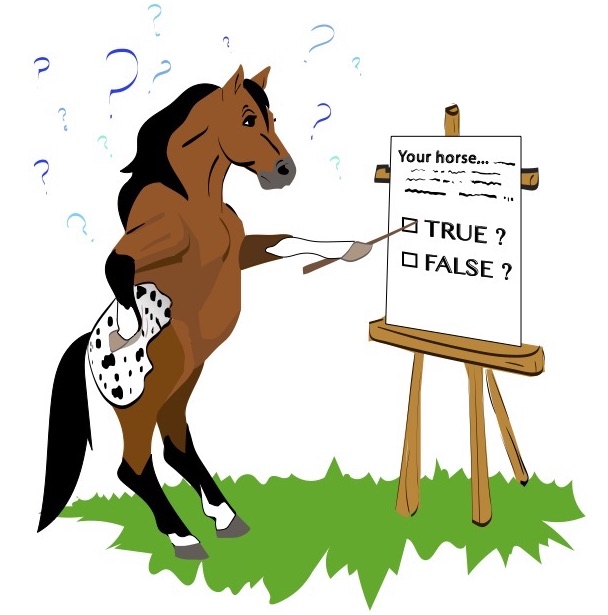
1. True or false: Horses learn from the precise, timely application of pressure.
T / F
2. If you’re going down the trail on a pleasant morning and your horse is pulling on the bit, you should…
A) stop and immediately turn for home.
B) ignore it—something like that doesn’t matter now.
C) remind him with your cues that this isn’t okay.
3. Complete this basic tenet of horse training: “First teach the what, and only then teach…
A) the how.”
B) the why.”
C) the opposite.”
4. True or false: If your horse knows how to shut a gate working off your left leg, you can assume he’ll know how to do it working off your right.
T / F
HOW’D YOU DO? (Answers below.)
1. F is correct. Precise cueing is necessary, yes, but your horse actually learns from the release of pressure, not the application of it. When you release the pressure from your leg or rein, your horse associates that “reward” with whatever he was doing immediately before the release. That means that if you’re even a split second late in the releasing, you’re confusing your horse and possibly even “rewarding” a different behavior entirely. For example, if you’re late releasing the bit pressure for a backup, you may wind up rewarding a head toss instead of the correct backward step. (Learn more of world champion Sandy Collier’s “ride smart” prescriptions.)
2. C is correct. Remember—whenever you’re with your horse, you’re either training or untraining him. If you let him get away with wrong behavior, that’s setting an “I’m the boss” precedent in his mind. Instead, take the time to gently but firmly insist on the behavior you want from him. All the random moments you share with your horse add up to a lot of good training. Don’t waste them! (Have a puller? Train your horse to soften to rein pressure and “give his face.”)
3. A is correct. Your horse must understand and accept an idea before it can become his own, and only then can you train him *how* you want him to do what you’re asking. In other words, use your aids in a way that enables him to “find” what you want. Then, only when he understands a movement—such as bending or stopping—should you begin asking him to do it in a specific way or at an increased rate of speed. (Train your horse to execute a precise circle.)
4. F is correct. Never assume something you’ve taught your horse to do using one side of his body will translate to the other. It won’t. You must train both of his sides individually. So, if he can shut a gate working off your left leg, then also train him to do it off your right. (Here’s how to start the lateral training that leads to working a gate.)
Hey! Not already receiving H&R’s fun and informative newsletter? Sign up right now for The Ride.






